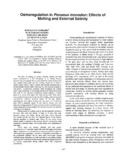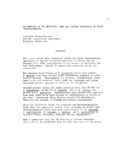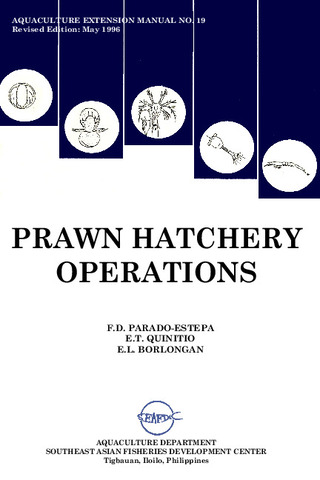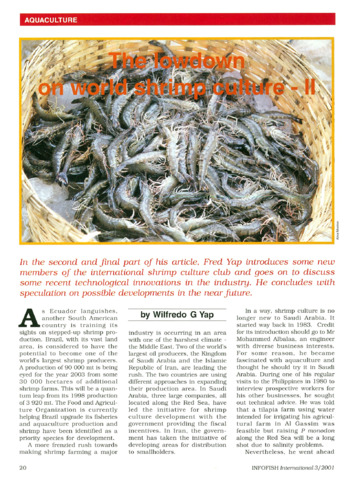Osmoregulation in Penaeus monodon: Effects of molting and external salinity
- Global styles
- MLA
- Vancouver
- Elsevier - Harvard
- APA
- Help

View/
Date
1986Page views
3,112ASFA keyword
AGROVOC keyword
Taxonomic term
Metadata
Show full item record
Share
Abstract
The effect of molting on osmotic, chloride, calcium and total protein concentrations in the hemolymph of the shrimp Penaeus monodon was investigated. Regardless of medium salinity, tissue water as well as osmotic and chloride concentrations in the hemolymph became stable within one day after molting. In general, total protein concentrations remained stable throughout the molting cycle. Large fluctuations in hemolymph calcium were observed 0-6 hours after molt. In low salinities, hemolymph calcium peaked at 3 hours postmolt to values 30% higher than those during molt. These values subsequently decreased rapidly one after molting, when hemolymph concentrations achieved intermolt values. At 44 ppt, calcium concentrations were highest during molt, then gradually declined by about 15% to intermolt values.
Suggested Citation
Ferraris, R. P., Parado-Estepa, F. D., de Jesus, E. G., & Ladja, J. M. (1986). Osmoregulation in Penaeus monodon: Effects of molting and external salinity. In J. L. Maclean, L. B. Dizon, & L. V. Hosillos (Eds.), The First Asian Fisheries Forum. Proceedings of the First Asian Fisheries Forum, 26-31 May 1986, Manila, Philippines (pp. 637-640). Manila, Philippines: Asian Fisheries Society.
Type
Conference paperCollections
- Conference Proceedings [299]
Related items
Showing items related by title, author, creator and subject.
-
An overview of the nutrition, feed and feeding techniques of prawn penaeid/shrimps
Piedad-Pascual, Felicitas (Philippine Council for Aquatic and Marine Research and Development, 1989)This paper echoes what transpired during the first International Conference of Penaeid Prawns/Shrimps held in Iloilo City in December 4-7, 1984, particularly on the Nutrition nd Feed Development. Around 25 papers were ... -
Series: Aquaculture extension manual; No. 19
Prawn hatchery operations
Parado-Estepa, Fe D.; Quinitio, Emilia T. ; Borlongan, Emeterio L. (Aquaculture Department, Southeast Asian Fisheries Development Center, 1996-05)
The manual, an updated version of the 1984 SEAFDEC/AQD manual, presents the underlying principles and step-by-step instructions of prawn larval and post-larval rearing. The techniques described are not only applicable to ...
; Borlongan, Emeterio L. (Aquaculture Department, Southeast Asian Fisheries Development Center, 1996-05)
The manual, an updated version of the 1984 SEAFDEC/AQD manual, presents the underlying principles and step-by-step instructions of prawn larval and post-larval rearing. The techniques described are not only applicable to ... -
The lowdown on world shrimp culture - II
Yap, Wilfredo G. (INFOFISH, 2001)This paper introduces some new members of the international shrimp culture club and goes on to discuss some recent technological innovations in the industry, particularly the polyculture of tilapia (mainly Oreochromis ...





